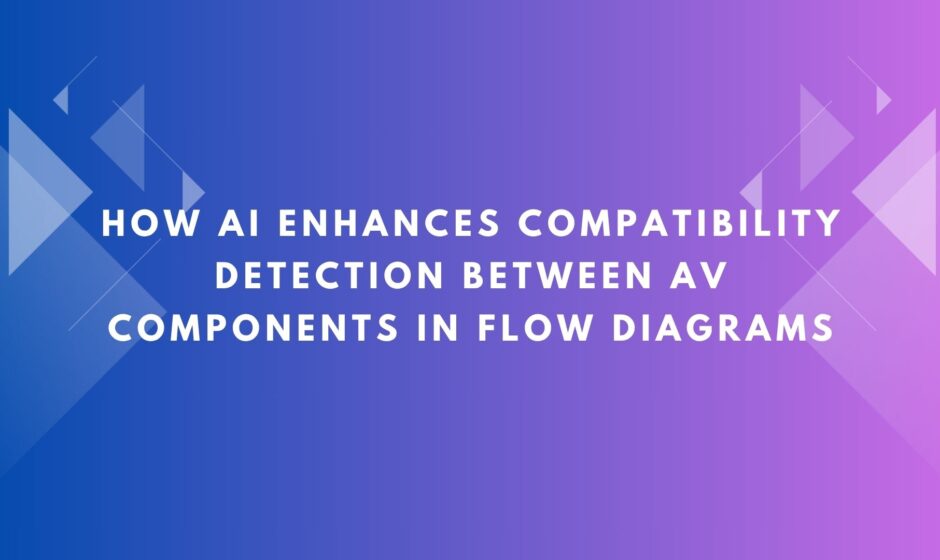In audio visual system design, ensuring component compatibility is a critical step. The interconnected devices in AV systems—from microphones and processors to displays and amplifiers—must work seamlessly together for the system to function correctly. One of the greatest challenges faced by AV designers is verifying that every device in a signal flow diagram is compatible with others. Mismatched equipment or overlooked technical details can lead to costly errors, delays, and rework. Fortunately, artificial intelligence is transforming how compatibility detection is handled in AV design. AI Signal Flow Diagram Software now offers advanced capabilities to automatically check and ensure component compatibility, making the design process faster, more reliable, and less error-prone. In this blog, we will explore how AI enhances compatibility detection between AV components in flow diagrams and why it matters for today’s integrators.
The Importance of Compatibility in AV Systems
AV systems consist of various components that must interconnect smoothly. These components include sources, processors, distribution systems, control interfaces, and endpoints. Each device has technical specifications such as signal formats, input/output types, voltage levels, and network protocols. Compatibility means that signals sent from one device can be received and processed correctly by the next device in the chain without signal loss, distortion, or system failure.
For example, connecting an HDBaseT output from a matrix switcher to a non-HDBaseT display input will cause problems. Similarly, linking devices with mismatched control protocols can result in failed command execution. Detecting these incompatibilities during the design phase is vital. However, with increasingly complex AV systems, manual checking is time-consuming and prone to errors.
Traditional Compatibility Checking: Challenges and Risks
Traditionally, AV designers verify compatibility through datasheets, experience, and manual cross-checking of device specifications. This process can be tedious and requires significant technical expertise. As projects grow in scale and complexity, manual checks become less practical. The risks of oversight increase, leading to installation delays, troubleshooting headaches, and expensive rework.
Moreover, system designs often undergo multiple revisions. Each change requires compatibility checks to ensure that new or swapped components do not introduce problems. Without automation, this iterative process adds further delays and can impact project timelines.
How AI Signal Flow Diagram Software Revolutionizes Compatibility Detection
AI Signal Flow Diagram Software is reshaping the way compatibility is verified in AV design. By integrating artificial intelligence, these platforms can analyze device specifications, system requirements, and design logic to automatically detect compatibility issues. Here are key ways AI enhances this critical aspect of AV system design:
-
Automatic Cross-Referencing of Device Specifications
AI tools have access to vast databases of AV devices and their detailed specifications. When components are added to a flow diagram, the AI cross-references their input and output types, supported formats, protocols, and power requirements. It instantly flags any mismatches or incompatible pairings, reducing manual research. -
Real-Time Compatibility Alerts
As designers build or modify a signal flow diagram, AI software provides real-time alerts if a connection is incompatible. This immediate feedback allows designers to correct mistakes instantly, preventing errors from propagating throughout the project. -
Smart Suggestions and Alternatives
Beyond just flagging problems, some AI tools can suggest compatible alternatives or configuration changes. For example, if a device does not support a needed protocol, the software might recommend adding a converter or choosing a different model that fits the system better. -
Learning from Past Projects
AI algorithms can learn from historical project data and user corrections. This means the software becomes smarter over time, improving its compatibility detection accuracy and tailoring suggestions to the designer’s preferences and common equipment choices. -
Integration with Manufacturer Data
Many AI Signal Flow Diagram Software platforms integrate directly with manufacturer catalogs and data feeds. This ensures that compatibility checks are based on the most current device information, including firmware updates or new model releases.
Benefits of AI-Driven Compatibility Detection
The introduction of AI in compatibility detection brings several important benefits for AV professionals:
-
Reduced Errors and Rework
Automatically identifying compatibility issues early means fewer surprises during installation. This leads to smoother projects, fewer site visits, and lower costs associated with rework. -
Faster Design Cycles
Automating tedious manual checks accelerates the design process, enabling integrators to deliver proposals and documentation more quickly. -
Improved Confidence and Quality
Designers gain confidence that their diagrams represent fully compatible systems, which improves client trust and satisfaction. -
Scalability for Complex Systems
AI handles the complexity of large systems with hundreds of components effortlessly, something that would be impractical manually.
Real-World Impact on AV Projects
Consider a large corporate video conferencing system involving multiple codecs, DSPs, cameras, microphones, displays, and control devices. Using AI Signal Flow Diagram Software, the designer can quickly place devices into the system, and the AI automatically verifies that all connections meet signal format and control protocol requirements. If a new device is introduced, the AI checks compatibility instantly and suggests needed adapters or alternative equipment.
This streamlined approach prevents costly errors such as incompatible video resolutions or unsupported control commands from reaching the installation team. The project moves faster and more smoothly, resulting in a high-quality, reliable system.
Looking Ahead: The Future of AI in AV Compatibility
As AI technology advances, compatibility detection will become even more sophisticated. Future AI tools might incorporate predictive analytics to forecast potential system conflicts before they arise. They may also integrate with simulation and testing tools, allowing designers to virtually validate system performance under various conditions. Cloud-based AI platforms will enable collaboration and continuous updates, ensuring compatibility checks are always up to date with the latest product information.
Read more: https://theomnibuzz.com/create-signal-flow-diagrams-for-hybrid-classrooms-using-ai-tools
Conclusion
Compatibility detection between AV components is a complex but critical task in system design. AI Signal Flow Diagram Software is revolutionizing this process by automating checks, providing real-time alerts, and offering smart recommendations. The result is faster, more accurate designs that reduce costly rework and improve system reliability. For AV integrators and designers, adopting AI-driven tools is no longer optional but essential to meet the demands of today’s increasingly complex AV environments. Embracing AI not only enhances compatibility detection but also elevates the overall quality and efficiency of AV projects.



